There can be your advertisement
300x150
"House of Beasts": Moscow estate with a secret zoo
Residents say that the stone beasts come alive and whisper to each other
Imagine: you're walking down a Moscow street and suddenly see an odd sight — crocodiles clambering up the walls of a house, giraffes running, snakes writhing, and exotic birds looking down at you from the roof. No, this isn't a hallucination or a modern installation — it's the famous "House of Beasts" on Chistye Prudy Boulevard. But why, in the early 20th century, did a Moscow merchant decorate his mansion with an entire stone zoo? Is there some secret behind this whimsical facade? And what connection does the house have to a man whose inventions we still use every day?
The Merchant Who Brought Exotic Animals to Moscow
The income-generating house No. 14 on Chistye Prudy Boulevard was built in 1908–1909 by merchant and tea trader Peter Kuzmich Perlov. You may have heard this name — the Perlov family was a real tea empire of the Russian Empire. Their other famous Moscow "cookie house" — a Chinese tea shop on Miasnitskaya Street, decorated in pagoda style.
But while the tea shop was styled after China, what inspired the merchant to create a stone beast encampment on Chistye Prudy? There are several theories.
According to the first, Perlov was a passionate traveler and hunter. In the early 20th century, he made several expeditions to Africa and India, bringing back not only exotic trophies but also vivid impressions. Returning to Moscow, he decided to immortalize his adventures in stone, decorating the facade of his new income-generating house with figures of animals he had encountered on safari.
According to another version, Perlov was not only a businessman but also a patron who supported the Moscow Zoological Garden (then known as the zoo). He regularly donated funds for acquiring new animals and improving enclosures. The house with sculpted beasts became a kind of advertisement for the zoo and an appeal to other wealthy Moscow residents to follow his example.
There is also a more prosaic version: Perlov simply followed the fashionable style of the time — Art Nouveau, which was characterized by inspiration from natural forms and interest in exoticism. Since the merchant could afford the best architects, his house became one of the most vivid examples of this style in Moscow.
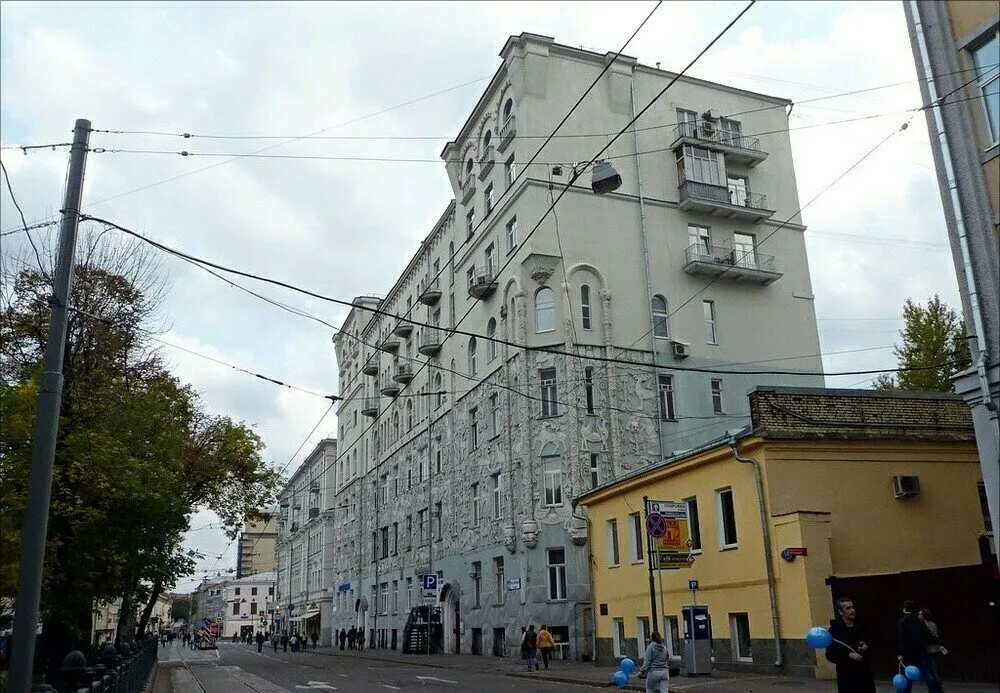 Photo: pinterest.com
Photo: pinterest.comWho Inhabits the Stone Jungles?
The facade of "House of Beasts" is a true textbook of zoology in stone. Here is an incredibly diverse fauna:
- On the first floor level are lizards and amphibians. Their figures seem to grow out of the ground, hinting at an evolutionary "ladder" of the animal world.
- The second floor is dedicated to mammals: here you can see deer, bears, monkeys, and even exotic giraffes and elephants for Russia.
- On the roof are birds and bats — creatures capable of conquering the air.
But the most impressive part is the attention to detail. The sculptures of animals on the facade are not just decorative elements. Each animal is depicted anatomically accurate, in a characteristic pose for that species. It's clear that the craftsmen carefully studied anatomy and habits of exotic beasts, possibly even at the Moscow Zoo.
Did you know that some animals on the facade serve a practical purpose? For example, elephant figures act as brackets for balconies, and the curved necks of giraffes support cornices. A wonderful example of how artistic vision can combine with practical utility!
 Photo: pinterest.com
Photo: pinterest.com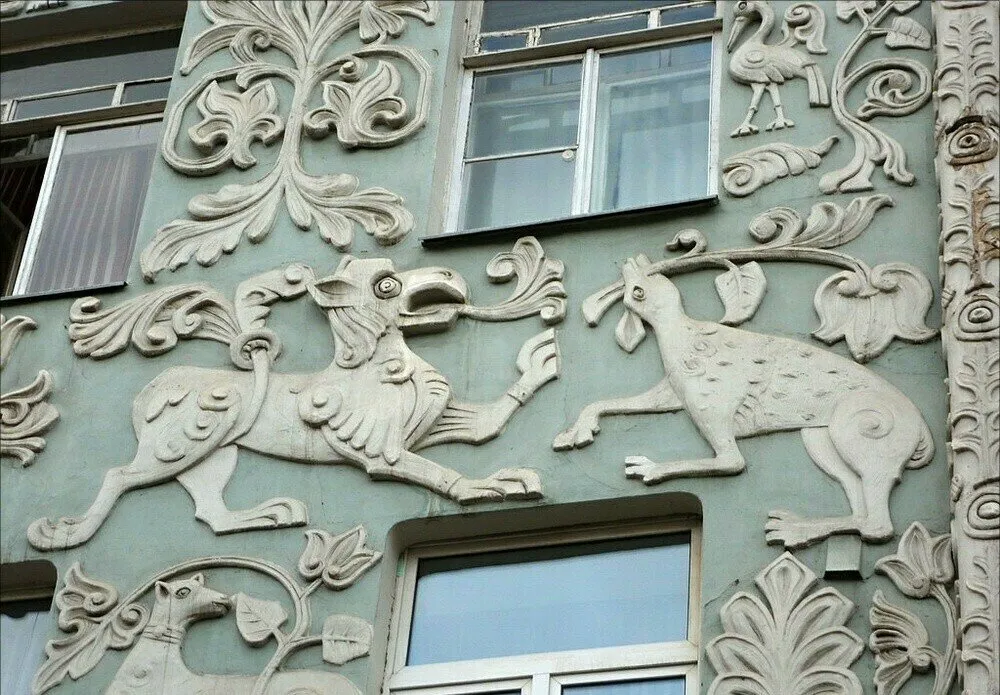 Photo: pinterest.com
Photo: pinterest.com Photo: pinterest.com
Photo: pinterest.comThe Secret Life of "House of Beasts"
When looking at the eccentric facade of "House of Beasts," it's easy to forget that this was an ordinary income-generating house where ordinary Moscow residents lived. Though perhaps not entirely ordinary.
According to accounts of contemporaries, Perlov rented out apartments mainly to members of the creative intelligentsia — artists, musicians, writers. Among the residents were well-known cultural figures of their time: artist Vasiliy Perpletkov, writer Yuri Ayhenvald, sculptor Sergei Konenkov.
There's a legend that Perlov provided preferential rent for residents on one condition: once a month, they had to gather in his apartment on the first floor for literary and musical evenings. Imagine these gatherings under the stone gazes of exotic animals!
But the most interesting chapter in the house's history is connected to the name of a man whose invention is familiar to all of us. In the 1920s, Vladimir Zvorykin — the inventor of modern television — lived and worked in "House of Beasts." It was here that he conducted the first experiments with the electron-beam tube, which formed the basis of television screens. Indeed, Zvorykin did not complete his work in Moscow — in 1919 he emigrated to the United States, where he continued his research and ultimately created modern television.
A fascinating coincidence: the house decorated with exotic animals from all over the world became the cradle of technology that later made these animals accessible for observation by millions of people through television screens!
The Difficult Fate of the Stone Zoo
The story of "House of Beasts" in Soviet times was not easy. After the revolution, the mansion was nationalized, luxurious apartments were turned into communal flats, and the unique facade gradually deteriorated without proper care.
In the 1930s, the house was almost sacrificed in the struggle against "architectural excesses." Plans were drawn up to demolish all decorative elements and give the building a more "proletarian" look. Fortunately, these plans were blocked by the Great Patriotic War, and after it, the idea of renovation was forgotten.
A new threat loomed over the house in the 1970s, when Moscow began mass urbanization and demolition of historical buildings. "House of Beasts" was planned to be demolished to make way for a modern building. It was saved... by the animals themselves! More precisely, public outrage caused by media coverage of the potential destruction of this unique architectural monument. Moscow zoos and art historians joined forces to protect the stone beast encampment, and the house was ultimately saved.
In the 1990s, the house finally received restoration. Masters restored damaged sculptures of beasts and returned the building its historical appearance. Today, "House of Beasts" is one of the architectural pearls on Chistye Prudy Boulevard and a popular destination for guided tours.
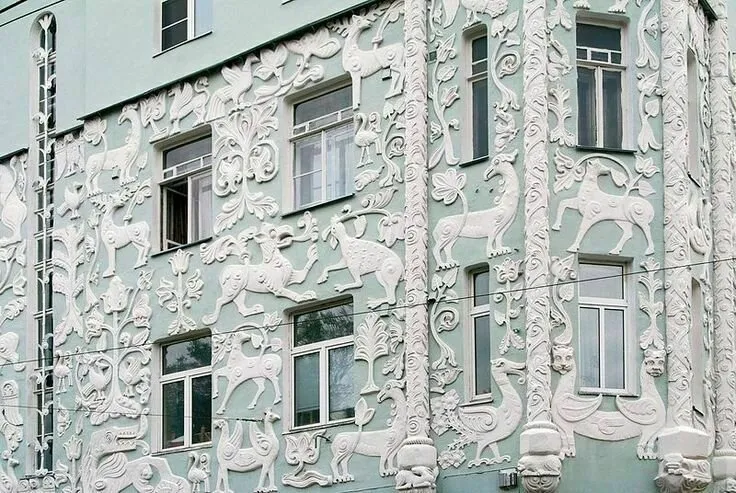 Photo: pinterest.com
Photo: pinterest.comLiving Secrets of the Stone Beasts
But the story of "House of Beasts" doesn't end here. Until now, it has retained several mysteries that puzzle historians and Moscow experts.
First, it is unknown exactly who was the author of the sculptures. According to some sources, it was sculptor Sergei Konenkov, while others suggest a group of unknown craftsmen from the stonemasons' guild.
Second, the sketches and drawings of the facade have never been found. Perhaps they were destroyed in a fire at the City Hall archive in 1917, or maybe they are kept in private collections of descendants of the architect or the client.
And finally, the most intriguing mystery: why are animals from all continents represented on the facade except Australia? No kangaroos, no platypus, no koalas among the sculptures. A random oversight or a deliberate choice? Perhaps the answer lies in Perlov's personal history, who, according to some sources, planned a trip to Australia but never made it due to the outbreak of World War I.
Modern residents of the house report that sometimes at night, they hear strange sounds, as if the stone beasts come alive and whisper to each other. Of course, this is just a city legend. But when walking past "House of Beasts" in the twilight, one can't help but look at the facade: what if the tail of a crocodile really twitches or the eye of a stone owl blinks?
Maybe that was the intention of the house's creators — to remind urban dwellers of the wonderful world of nature that exists beyond the stone jungles of the megacity. And while we remember this world, while we pause in awe before "House of Beasts," the stone zoo will live on and delight new generations of Moscow residents and visitors to the capital.
 Photo: pinterest.com
Photo: pinterest.comCover: pinterest.com
More articles:
 Budget Renovation Doesn't Mean Poor Quality: Secret Tips for Saving Money Without Sacrificing Standards
Budget Renovation Doesn't Mean Poor Quality: Secret Tips for Saving Money Without Sacrificing Standards Where to Save and When to Pay More in 2025: Analyzing Every Expense Category
Where to Save and When to Pay More in 2025: Analyzing Every Expense Category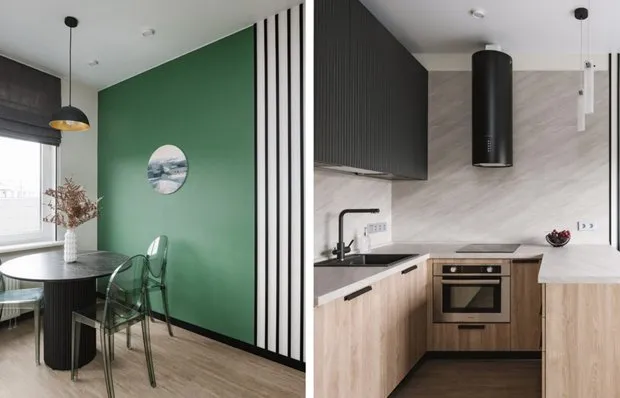 7 budget-friendly stylish ideas for a cozy and functional interior
7 budget-friendly stylish ideas for a cozy and functional interior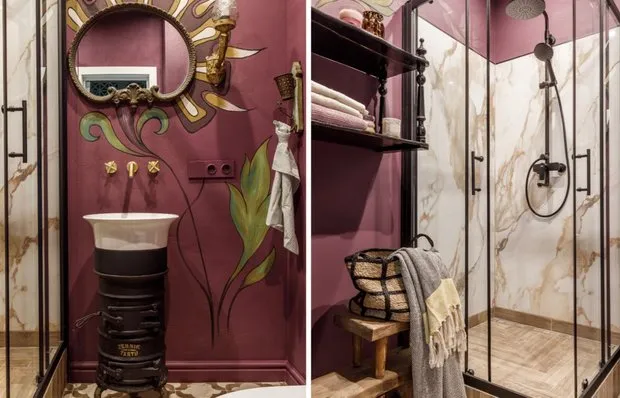 Small Inspiring Bathroom in a 40 m² Studio Apartment
Small Inspiring Bathroom in a 40 m² Studio Apartment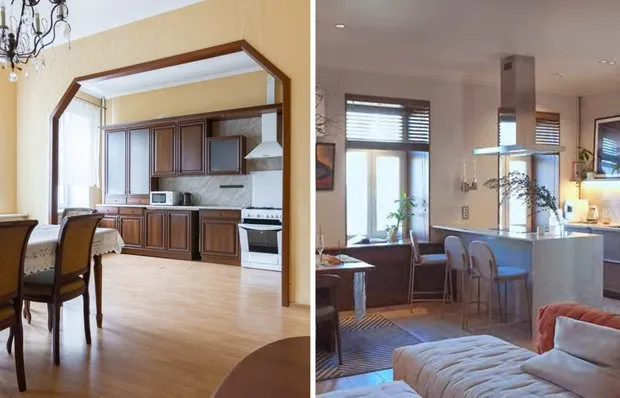 Before and After: Transformation of a 110 m² Apartment Designer in a Heritage House
Before and After: Transformation of a 110 m² Apartment Designer in a Heritage House 6 bedrooms that will delight you
6 bedrooms that will delight you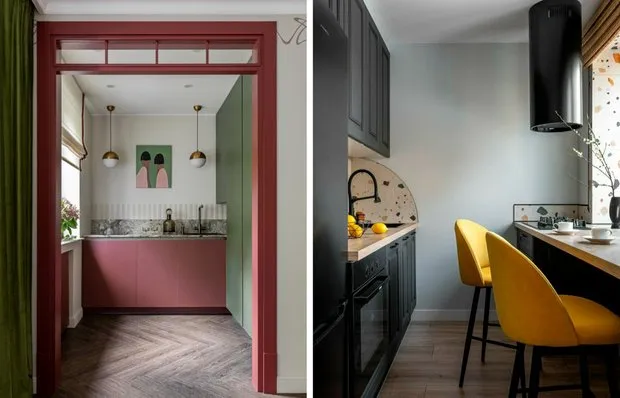 How to Arrange a Tiny Kitchen in a Khrushchyovka: 5 Successful Examples
How to Arrange a Tiny Kitchen in a Khrushchyovka: 5 Successful Examples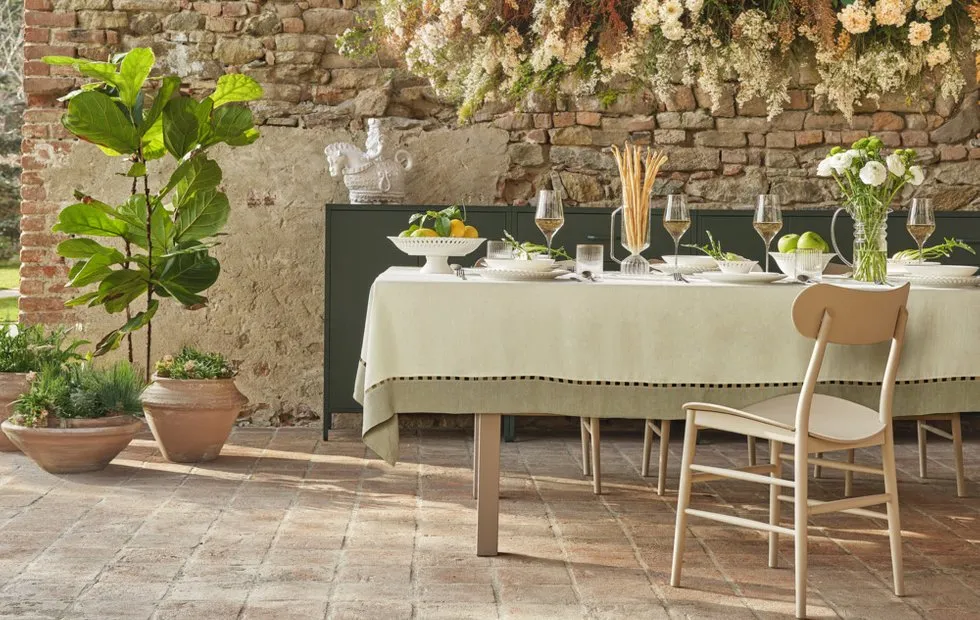 Best Finds for the Garden and Comfortable Outdoor Retreat
Best Finds for the Garden and Comfortable Outdoor Retreat